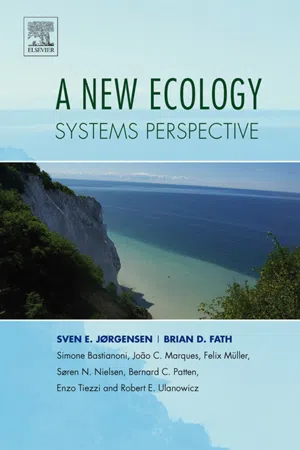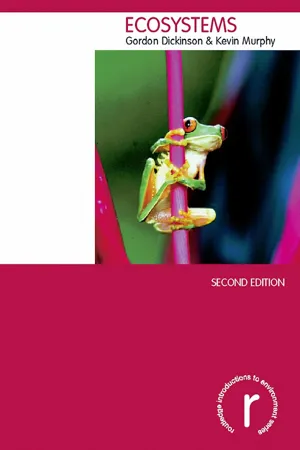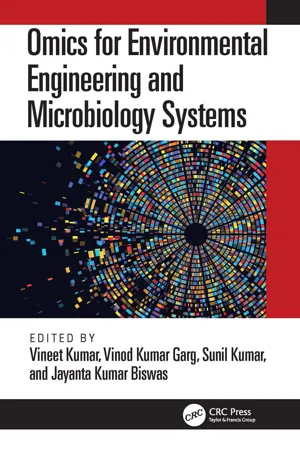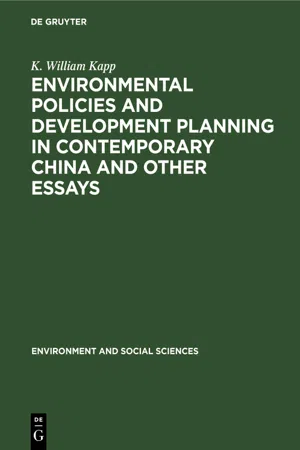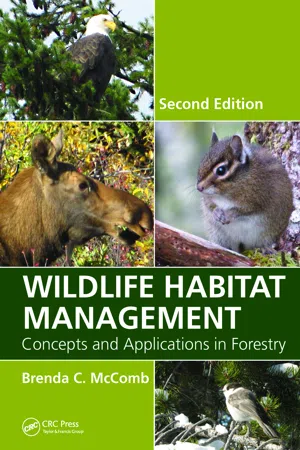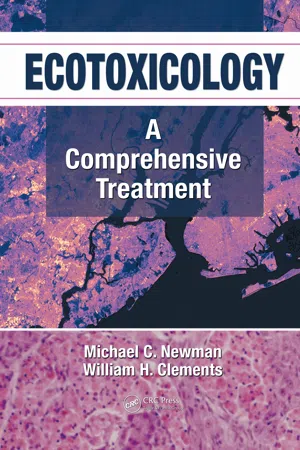Biological Sciences
Disruptions in Ecosystems
Disruptions in ecosystems refer to disturbances that can negatively impact the balance and functioning of natural environments. These disruptions can be caused by human activities, natural disasters, or invasive species, and can lead to loss of biodiversity, changes in species abundance, and alterations in ecosystem processes. Understanding and mitigating disruptions in ecosystems is crucial for maintaining the health and stability of natural environments.
Written by Perlego with AI-assistance
Related key terms
1 of 5
7 Key excerpts on "Disruptions in Ecosystems"
- eBook - ePub
A New Ecology
Systems Perspective
- Sven Erik Jørgensen, Brian D. Fath, Simone Bastianoni, Joao C. Marques, Felix Muller, S. Nors Nielsen, Bernard D. Patten, Enzo Tiezzi, Robert E. Ulanowicz(Authors)
- 2011(Publication Date)
- Elsevier Science(Publisher)
Chronic stress or background environmental variabilities are not included within this definition, although these relations can also cause significant ecosystem changes. If a disturbance exceeds certain threshold values, then flips and bifurcations can occur, which provoke irreversible changes of the system’s trajectory. Therefore, understanding ecosystems requires an understanding of their disturbance history. A focal problem of any disturbance definition is how to indicate the “normal state” of an ecosystem (White and Jentsch 2001) because most biological communities “are always recovering from the last disturbance” (Reice, 1994). For our orientor-based viewpoint it might be appropriate to distinguish the temporal phases during which orientor dynamics are executed from phases of decreasing complexifications caused by exceeding threshold values. Some basic terms from disturbance ecology are introduced in Figure 7.4. Disturbances exhibit certain magnitudes (sizes, forces, and intensities of the events, as variables of the source components), specificities (spectrum of disturbed elements), and severities (the impacts of the events on system properties). They can be characterized by various temporal indicators, such as their spatio-temporal scales, their duration, abruptness, recurrence interval, frequency, or return times. In the literature, exogeneous disturbances resulting from processes outside the system are distinguished from endogeneous disturbances - eBook - ePub
- Gordon Dickinson, Kevin Murphy(Authors)
- 2007(Publication Date)
- Routledge(Publisher)
6 The role of disturbance and succession in ecosystem functioning
The abilities to endure unstable conditions and to recover quickly from events that destroy either the habitat or the organisms themselves are the hallmarks of disturbance-tolerant plants, animals and micro-organisms. Disturbance tolerators tend to colonise early in the successional recovery process that follows environmental catastrophes, large or small (from trampling damage on an upland path to volcanic eruptions). Lower-level intensities of disturbance are a commonplace feature of many ecosystems. Successional changes following disturbance events play an important role in the functioning of disturbed ecosystems. This chapter covers:- Defining disturbance
- Succession: community change over time in ecosystems
- Colonisation of lifeless surfaces
- Land–sea interface
- Ecosystem resilience and fragility
Defining disturbance
Ecosystems exist in a constantly changing world. Change results from processes in the abiotic or physical environment, from changes in the biotic environment, the living ecosystem community and by human actions. Disturbance is both a natural and normal part of the environment, but is often increased in scale and accelerated in effect by human impacts. Disturbance is defined as any influence on an ecosystem, which increases the probability of destruction of biomass of the organisms present (see Box 6.1 ). In disturbed ecosystems these influences may be either biotic or abiotic. For example, grazing is a strong disturbance pressure on plants in a prairie ecosystem, but so are abiotic disturbances (e.g. caused by lightning-induced grass fires).Disturbance events affecting ecosystems range from the intermittent and cataclysmic (e.g. a volcanic eruption: see Chapter 2 ), to more permanent and lower intensity pressures, such as the constant effects of disturbance produced by wave action and grazing on marine rocky shore ecosystems.Disturbance affects different ecosystems in different ways. Some species are highly adapted to tolerate disturbance. Disturbance-tolerance adaptations in plants include rapid life cycle, coating of trunks with bark, which is resistant to the high temperatures associated with burning, and rapid regrowth of tissues from intercalary (‘protected’) meristems in response to grazing. The response of a plant community to disturbance will thus be a function of the nature of the disturbance and of the response of the members of that community to particular disturbances. As changes in the biotic and abiotic environment are normal, change in response to natural environmental change is part of the behaviour of ecosystems. Where disturbance is small or cyclical, for example, seasonal or yearly changes in climatic conditions, the response will also be relatively minor. But there are also directional changes which result from what we have identified as natural disturbance. Some of these relate to long-term changes in climate, or to major geomor-phological processes. Others are related to changes that have been brought about by modification of the environment by plant communities. This results in further, directional change to the plant community itself in the process known as ‘succession’. This important concept was introduced in Chapter 1 - Vineet Kumar, Vinod Kumar Garg, Sunil Kumar, Jayanta Kumar Biswas, Vineet Kumar, Vinod Kumar Garg, Sunil Kumar, Jayanta Kumar Biswas(Authors)
- 2022(Publication Date)
- CRC Press(Publisher)
Therefore, stress detectable at the ecosystem level is alarming because it may indicate a breakdown in homeostasis at lower levels of biological organization (Petitjean et al. 2019). According to our definitions, ecological disturbances are stressors that are able to alter the physical structure of an ecosystem (Figure 18.1). Disturbances in estuaries can be natural, such as tropical cyclones, droughts, freezes, floods, wildfires, and disease, or human-induced, such as oil spills, industrial waste discharges, and dredging. Stress, on the other hand, manifests itself primarily at lower hierarchical levels of biological organization as a response to stressors, while community and ecosystem response times may take longer to detect. For example, coastal vegetation stressed by high winds and flooding during tropical cyclones may lead to mass mortality of plants and subsequent habitat loss for the animals that rely upon that vegetation for food and shelter. In another example, the 2010 Deepwater Horizon oil spill in the Gulf of Mexico set off cascading effects on the entire food web, causing mass mortality of top predators such as marine mammals and seabirds, and in turn, the abundance of the prey species Gulf menhaden (Brevoortia patronus) increased in the absence of predation more than four standard deviations higher than its previous 39-year mean (Short et al. 2017). Therefore, disturbances can completely restructure communities and ecosystems through cascading effects up or down the food web, and also from the organismal level to the population and community levels. Moreover, short-lived disturbances can also have long-lasting effects on the abiotic environment (Borja et al. 2010). On the other hand, soil toxicity would impede plant recolonization and growth and thus reduce the ecosystem’s intrinsic resilience to perturbations (El-Shatnawi and Makhadmeh 2001). FIGURE 18.1 Hierarchical representation of bottom-up disturbance effects on ecosystems- K. William Kapp(Author)
- 2020(Publication Date)
- De Gruyter(Publisher)
The dis-ruption of man's environment by his own activities and decisions is a particularly complex process which transcends the scope and the points of view of any of today's highly compartmentalized fields of study. For this and other reasons which, I hope, will become more persuasive in the course of the subsequent analysis, I feel that many of the terms and con-cepts developed by particular disciplines (as, e.g., externalities, disecono-mies, nuisances, ecological imbalance, biospheric disruption, etc.), useful as they may have been and perhaps still are for particular theoretical pur-poses, are no longer adequate. In fact, the increasing disruption of man's natural and social environment raises the most far-reaching problems not only with respect to the proper methodological and theoretical procedures but also, and particularly with regard to the proper modes of control and policy-making. The solution of these theoretical and practical problems calls for the closest possible collaboration of social and natural scientists, including technologists. With this end in view I would indeed endorse Professor Tsuru's suggestion to use the term 'environmental disruption' as a broad and general concept designed to cover all those phenomena which either singly or together affect the character and quality of the natural and the social environment of man. The use of the term environ-mental disruption should serve as a recognition of the fact that we are concerned with matters that touch the core of human existence and which in their complexity transcend the scope and competence of any particular discipline. 2. CIRCULAR CAUSATION This brings me back to the fundamental issue of the causal process which gives rise to the disruption of the physical and social environment. Only if we view the process of causation correctly can we hope to make head-way with the urgent task of controlling this disruption or at least limiting its most destructive effects.- eBook - PDF
Wildlife Habitat Management
Concepts and Applications in Forestry, Second Edition
- Brenda C. McComb(Author)
- 2015(Publication Date)
- CRC Press(Publisher)
79 Disturbance Ecology and Habitat Dynamics Stuff happens: fires, hurricanes, volcanoes, floods, and earthquakes. On average, approximately 450,000 ha are burned in the United States annually, over 1 million ha are affected by hurricanes and over 20 million ha are affected by insects and pathogens (Dale et al. 2001). The economic cost to society is over 1 billion dollars/year in the United States (Dale et al. 2001). To most people, these events are catastrophes. They can kill people, destroy property, and they can be catastrophic for other organisms too. Wind uproots trees, fires burn dead wood, and floods erode streambanks. They can also be events that renew habitat for other species. Indeed biodiversity conservation depends on disturbance. Wind adds dead wood to a forest, fires open the tree canopy and initiate a new for-est, and floods create a new seedbed for willows and cottonwoods. Disturbances to forests have occurred for as long as there have been forests. Animals living in forests have adapted to many of these disturbances and some species rely on disturbances to provide food, cover, and water for survival. Understanding characteristics of disturbances and how disturbances influence habitat ele-ments in stands and over forests can provide information that forest managers can use to provide habitat for selected species or to aid in conserving biodiversity. Knowledge of natural disturbances can help when developing silvicultural systems that might meet the needs of forest-associated wild-life (Franklin et al. 2002). There are several characteristics of disturbances that can be used to understand potential effects on forest development, forest function and the sizes, numbers and distribution of habitat elements: type of disturbance, size and pattern, frequency, and severity. Disturbance type is also important, with changes in habitat elements being quite different depending on the cause of the disturbance (e.g., fire vs. wind). - eBook - PDF
Ecotoxicology
A Comprehensive Treatment
- Michael C. Newman, William H. Clements(Authors)
- 2007(Publication Date)
- CRC Press(Publisher)
Because disturbance is an integral part of the evolutionary history of many organ-isms, recovery from natural disturbance may be quite rapid. Communities dominated by opportunistic species capable of rapid colonization will generally recover quickly. Species that initially colonize disturbed habitats are often trophic generalists, capable of exploiting a wide range of resources. Disturbance Ecology and the Responses of Communities to Contaminants 513 Box 25.2 Recovery of Communities from Large-Scale Disturbances Three large-scale disturbances that occurred over the past several decades have provided eco-logists with unprecedented opportunities to examine recovery and test various hypotheses concerning biotic and abiotic factors that influence resistance and resilience. Two of these disturbances were natural (the eruption of Mt. St. Helens and the crown fires at YNP), whereas a third (the Exxon Valdez oil spill) was anthropogenic, providing an opportunity to examine recovery from different types of disturbances. The eruption of Mt. St. Helens in May 1980 and the associated blowdown, mud flows, avalanches, and ash deposits affected over 700 km 2 in southwestern Washington (USA). The fires in YNP during the summer of 1988 were larger than any in the previous 200–300 years. A total of 2500 km 2 of the park burned, creating a complex mosaic of disturbed and undis-turbed habitats. Finally, the breakup of the Exxon Valdez in March 1989 spilled approximately 41 × 10 6 L of crude oil in northeastern Prince William Sound (Alaska, USA) and oiled an estim-ated 800 km of shoreline. By any account, each of these disturbance events was large scale, novel, and had a major impact on the surrounding communities. Ecologists rushed to these sites to validate predictions of theoretical and empirical models derived from nearly a century of studying community succession. While some of the original predictions were well supported by field studies, others were not. - eBook - PDF
- Judith Rosales(Author)
- 2019(Publication Date)
- Delve Publishing(Publisher)
Biodiversity, Ecosystems, and Ecological Alteration CONTENTS 1.1. Current Trends on Biodiversity ............................................................ 5 1.2. Distribution of Biodiversity ................................................................. 6 1.3. Herbivores Distribution in Natural Habitats ........................................ 7 1.4. The Birds Community Dynamics ....................................................... 12 1.5. The Current Situation of Biodiversity ................................................. 14 1.6. The Association Between Mankind and the Surroundings .................. 17 CHAPTER 1 Altered Ecosystems 2 Biodiversity encompasses the variety of life, at all levels of the organiza-tion, that has been classified by morphological, evolutionary (phylogenetic), and ecological (functional) criteria. The manifestation of nature is main-tained in the continuous dynamics of disturbances and forces of processes to multiple equilibriums. This translates to ecological pliability which is the amount of disturbance that an ecosystem can endure without altering self-organized processes and structures. On the other hand, the current style of development in many countries around the world is characterized by heavy dependence on nature and its resources. In most of the cases, the economy is dependent entirely upon the exploitation of natural resources. To such countries, living natural resources are part of their national wealth. Most countries are in the midst of an environmental and natural resources crisis, and this crisis is a discouragement to the human efforts towards sustained economic growth. The fundamental challenges constitute dependency on expensive energy inputs, loss of forested landscapes and land deterioration. All these challenges culminate in the impoverishment of biodiversity.
Index pages curate the most relevant extracts from our library of academic textbooks. They’ve been created using an in-house natural language model (NLM), each adding context and meaning to key research topics.
